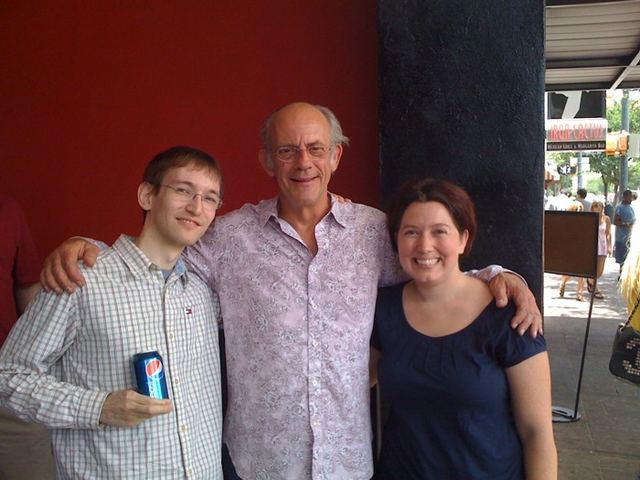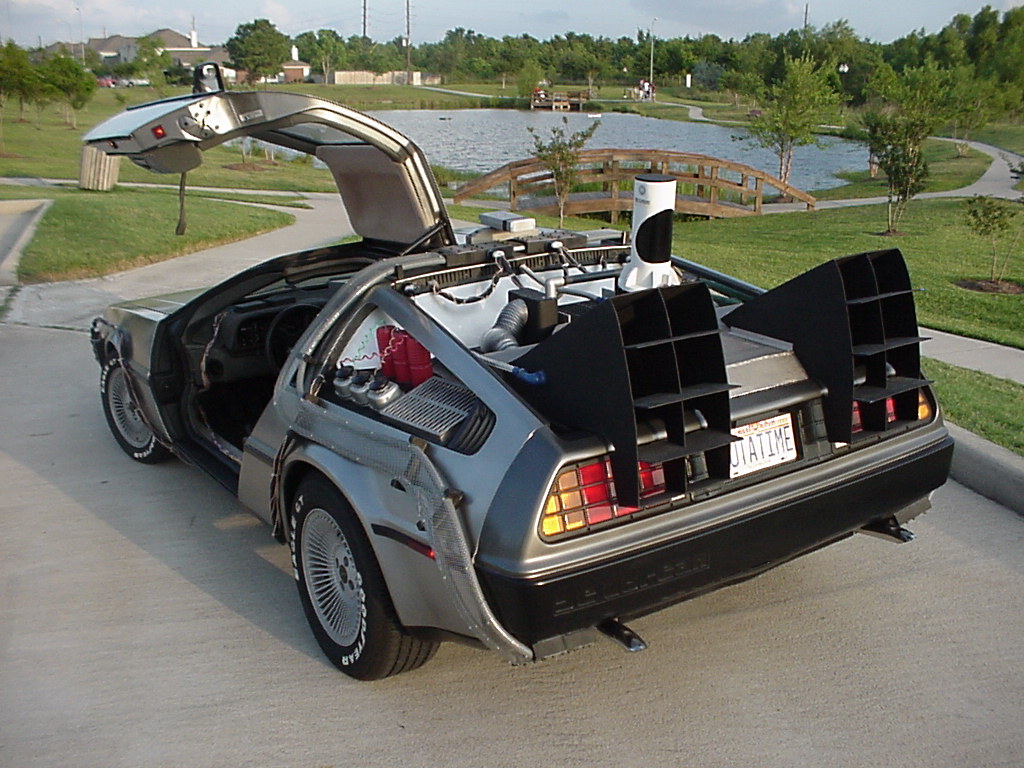
On Sunday morning, myself and a few friends drove to the Alamo Drafthouse for one of their famous “feasts”—expensive, multiple-course menus paired with a movie marathon. This time it was the Back to the Future trilogy, for which they pulled out quite a few of the stops. Three shiny DeLoreans were parked out front. BTTF-themed collectibles were raffled off. And in the best part of the day, Christopher Lloyd himself made a surprise appearance for a Q&A—he very rarely does these.

Prior to the show, one of the Alamo employes warmed up the crowd briefly and pointed out how, on a weekend where we could see remakes of The Karate Kid and The A-Team back-to-back, the notion of a modern Hollywood remake of Back to the Future is all but inconceivable. It doesn’t mean they wouldn’t try, of course, but his point remains valid. What’s so special about the time-travel movie?

Well, a hell of a lot, actually. Watching it all over again, 25 years later, it holds up a lot better than many other nostalgia-infused films you remember from the 80s (sorry, Red Dawn). I’m sure it was initially greenlit to ride the wave of whitewashed 1950s nostalgia that had swept the country around this time; the contrast between the graffiti-strewn 1980s Hill Valley and the pristine 1950s Hill Valley is pretty over-the-top.

The film’s log line even strikes you as kind of hokey: “A high school kid is accidentally sent back in time to the 1950s, where he must ensure his parents fall in love and find a way to return to the future.” But the goofy and rather complicated premise is perfectly executed. The dialogue is sharp, the jokes are funny, and the acting is fantastic throughout.
The screenplay is also what film nerds would call “efficient.” Almost every line of dialog, every scene, and every shot are directly related to the story of Marty being sent to the past and coming back to the future. A great example is the opening shot of the film, a two-and-a-half-minute continuous take around Doc Brown’s apartment. This single shot manages to establish all of the following without any actors fully appearing onscreen:
- Doc has an obsession with time.
- Doc is a bankrupt inventor whose family home has been sold and destroyed.
- Doc idolizes great scientists, lives a cluttered life, and has a fondness for quirky but functional gadgets.
- Doc and his dog haven’t been home for days.
- Doc is absent-minded enough to leave his gadgets running.
- Doc has a school-aged friend (Marty) who knows how to let himself into the apartment and is a skateboarder.
- Doc is in possession of stolen plutonium, and perhaps in cahoots with Libyan terrorists.
Director Robert Zemeckis gets the credit for the incredible storytelling work here. Many other sequences are put together just as well. The A-story and the B-story—Marty working to hook up his parents, and Doc working to send Marty back to 1985—bounce deftly off each other. The climax of the movie, told in real time, is incredibly well-constructed and exciting. In my book, this is almost certainly Zemeckis’ best film.

And the importance of the chemistry between Michael J. Fox and Christopher Lloyd really can’t be underestimated. Seriously, try to imagine an alternate movie where a high-school boy and an elderly mad scientist have a loving platonic friendship. It could have easily been super, super-creepy.
[youtube=http://www.youtube.com/watch?v=8uwuLxrv8jY&hl=en_US&fs=1&]
The sequels—written as one script and filmed back-to-back—were a satisfying way to turn the story into a trilogy, though they were a good bit clunkier in parts, a little too fond of rehashing gags, and some of the initial magic wasn’t there. Still, Back to the Future II was a very innovative attempt at alternate-timeline storytelling, with a clever rerun of the first movie’s events. And part III was surprisingly good; Christopher Lloyd in his Q&A described this as his favorite of the films, and the runaway-train sequence was very fun to watch on the big screen.
But make no mistake, the sequels’ very existence is a tribute to the greatness of the original. It was great to see on the big screen and it really is that good. I can’t fault Ryan one bit for it being his favorite movie—but don’t worry, Groundhog Day, you’re still my baby.
Great entry…I completely agree. BUT….
Groundhog Day? REALLY??
Really really. It’s a fantastic fucking movie.